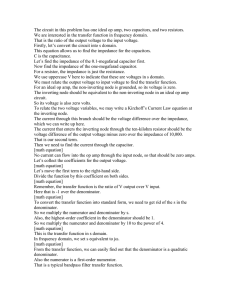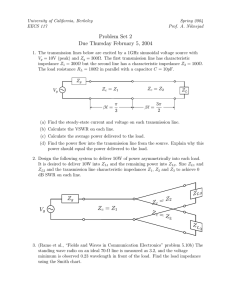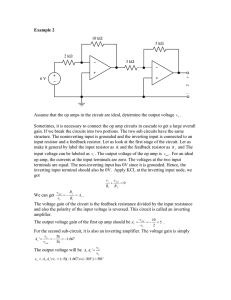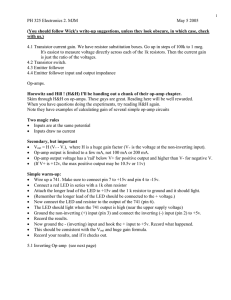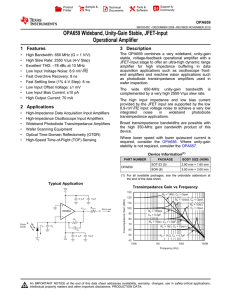In this problem, an active filter circuit is given.
advertisement
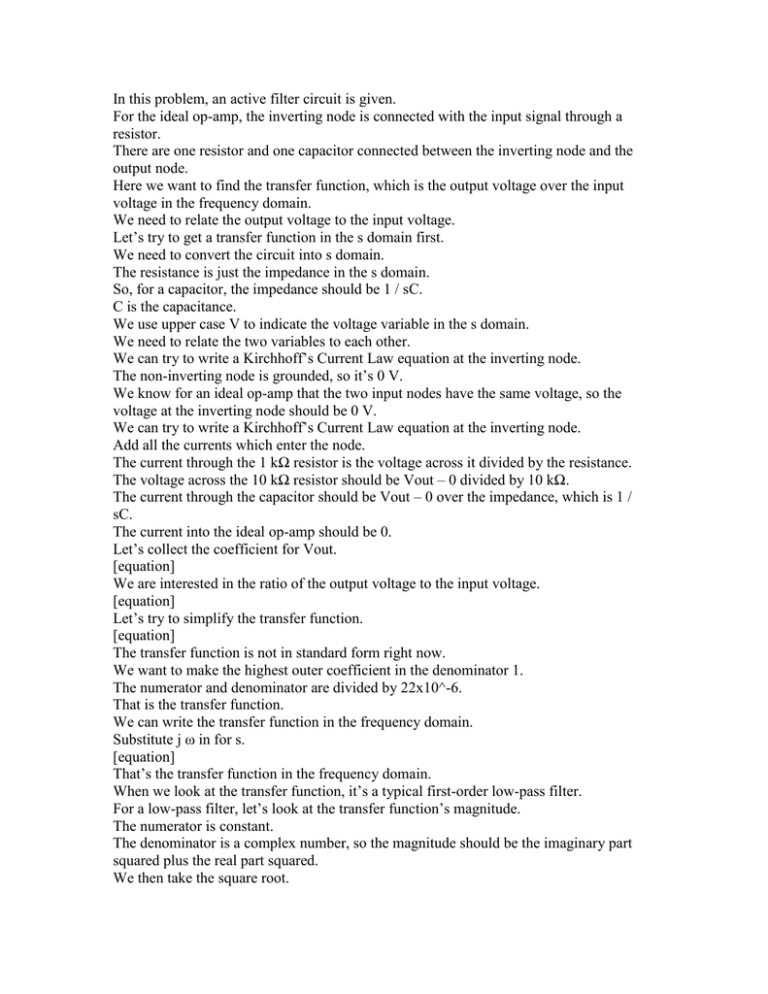
In this problem, an active filter circuit is given. For the ideal op-amp, the inverting node is connected with the input signal through a resistor. There are one resistor and one capacitor connected between the inverting node and the output node. Here we want to find the transfer function, which is the output voltage over the input voltage in the frequency domain. We need to relate the output voltage to the input voltage. Let’s try to get a transfer function in the s domain first. We need to convert the circuit into s domain. The resistance is just the impedance in the s domain. So, for a capacitor, the impedance should be 1 / sC. C is the capacitance. We use upper case V to indicate the voltage variable in the s domain. We need to relate the two variables to each other. We can try to write a Kirchhoff’s Current Law equation at the inverting node. The non-inverting node is grounded, so it’s 0 V. We know for an ideal op-amp that the two input nodes have the same voltage, so the voltage at the inverting node should be 0 V. We can try to write a Kirchhoff’s Current Law equation at the inverting node. Add all the currents which enter the node. The current through the 1 kΩ resistor is the voltage across it divided by the resistance. The voltage across the 10 kΩ resistor should be Vout – 0 divided by 10 kΩ. The current through the capacitor should be Vout – 0 over the impedance, which is 1 / sC. The current into the ideal op-amp should be 0. Let’s collect the coefficient for Vout. [equation] We are interested in the ratio of the output voltage to the input voltage. [equation] Let’s try to simplify the transfer function. [equation] The transfer function is not in standard form right now. We want to make the highest outer coefficient in the denominator 1. The numerator and denominator are divided by 22x10^-6. That is the transfer function. We can write the transfer function in the frequency domain. Substitute j ω in for s. [equation] That’s the transfer function in the frequency domain. When we look at the transfer function, it’s a typical first-order low-pass filter. For a low-pass filter, let’s look at the transfer function’s magnitude. The numerator is constant. The denominator is a complex number, so the magnitude should be the imaginary part squared plus the real part squared. We then take the square root. When the frequency is 0 rad/s, we get a maximum magnitude of 10. When the frequency goes to infinity, we get a magnitude of 0.




